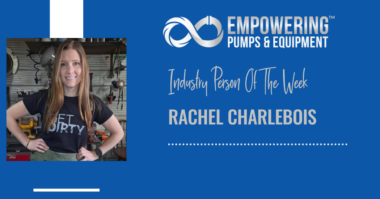This summer I started the Leadership Launch Pad program which is about creating high-performance teams across organizations by focusing on leadership mindset strategies. The goal is to help us become high-impact leaders both professionally and personally by empowering us to create a better understanding of ourselves, our mindsets and equip us with strategies to maximize our growth. It’s been great so far and I’m looking forward to seeing how much it helps me grow.
Something that I’ve learned so far is that a lot of us have learned to separate our personal lives from our work lives and that the strategies for personal growth are very similar (if not exactly the same – I’ll let you know after I finish the program!) to those used for professional growth. For myself, I had a very real “Ah Ha” moment when I realized that all of the personal growth work that I’ve been working on for years now, I should have also been doing that work in relation to my professional life. While personal growth does inherently benefit you professionally, if you’re actively keeping personal and professional separate, it will hinder your professional growth.
Being in the industrial sector, I thought this would be a great opportunity to shed some light on this by relating it to something everyone in our industry understands…preventative and predictive maintenance! I love finding fun and creative ways to correlate things. Both preventative and predictive maintenance practices have the goal to increase the reliability of your assets/equipment and decrease the amount of failure.
An article from UpKeep states “The difference between preventive and predictive maintenance is preventive maintenance is regularly scheduled while predictive maintenance is scheduled based on asset conditions. Predictive maintenance reduces labor and material costs whereas preventive maintenance costs less to implement. The main difference between the two is that preventive maintenance is scheduled at regular intervals while predictive maintenance is scheduled as needed (based on asset conditions).”
When I relate this to personal growth, I view preventative maintenance as our self-care activities. These are the things that I do on a regular basis to keep myself in “working order.” For me this is weekly therapy, working out regularly, getting enough nutrients in my body, and taking a break when I need it. I see preventative maintenance as the things we do that keep us going and help us live happy and healthy lives.
Predictive maintenance is about the personal and professional development activities that we do. For me this is the webinars or podcasts that I tune into to learn something new, it’s the Leadership Launchpad program I’m in to give myself the skills to be a better and more effective leader, it’s doing the activities that I know are going to move me forward in my growth and career. I see predictive maintenance as the things that we do to help ourselves level up and be better.
Now, let’s bring it all back. Both types of maintenance practices are important and we should be implementing both when it comes to our maintenance programs AND when it comes to our personal growth and development. But both come at a cost, it takes time, effort, and resources to do these things but when implemented effectively, you decrease the amount of burnout, frustration, and failure you experience. I look at it in a “what you put in; you get out” mindset. If you’re putting in what you need for your growth and well-being, the output will be significant.
*UpKeep source: https://www.onupkeep.com/learning/compare/preventive-predictive





Comments